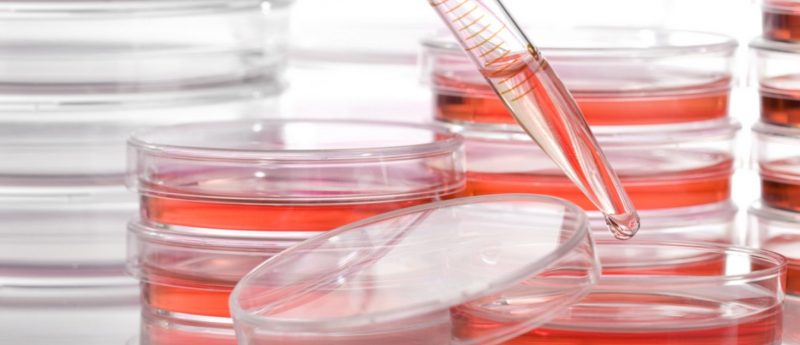Functional pituitary tissue grown from human stem cells

Human stem cells successfully used to generate functional pituitary tissue capable of secreting hormones when transplanted into rats with hypopituitarism
The pituitary gland is known as the master regulator of hormone production in the human body, releasing hormones key for bone and tissue growth, metabolism, reproductive functions and the stress response. Causes of hypopituitarism are diverse and can include tumors, genetic defects, trauma, infections and radiation therapy. The effects of pituitary dysfunction are wide ranging and can be particularly severe in children, causing learning disabilities, growth/skeletal problems in addition to issues with puberty and sexual function. Current therapy for hypopituitarism involves expensive hormone replacement therapies, which come with a number of limitations.
“The current treatment options for patients suffering from hypopituitarism are far from optimal,” explained Bastian Zimmer (Sloan Kettering Institute for Cancer Research, NY, USA). “Cell replacement could offer a more permanent therapeutic option with pluripotent stem cell-derived hormone-producing cells that functionally integrate and respond to positive and negative feedback from the body. Achieving such a long-term goal may lead to a potential cure, not only a treatment, for those patients.”
In search of this goal, recent work has focused on developing a procedure for generating pituitary cells from human pluripotent stem cells through the use of organoid cultures able to mimic the 3D organization of a developing pituitary gland. However, this novel approach is imperfect, relying on ill-defined cellular signals and lacking reproducibility, making it unsuitable for clinical-grade manufacturing.
To address these limitations, Zimmer and colleagues developed a simpler strategy allowing production of a large number of diverse, functional pituitary cell types suitable for therapeutic use. Rather than mimicking the complex 3D organization of the developing pituitary gland, the authors focused on exposing human pluripotent stem cells to cellular signals at a precise time point. Exposure to these signalling proteins causes the stem cells to differentiate into functional pituitary cells capable of hormone release. These derived cells were also observed to release varying amounts of hormone in response to known feedback signals.
The potential for clinical translation of this approach was next examined by transplantation of the stem cell-derived pituitary cells under the skin of rats which had undergone surgical removal of their pituitary glands. The cell grafts were deemed a success by the observation that they secreted adrenocorticotropic hormone, prolactin and follicle-stimulating hormone, in addition to triggering appropriate hormonal responses in the kidneys.
To further this work, the researchers hope to improve the protocol to generate pure populations of various hormone-releasing cell types, enabling the production of individualized grafts tailored to patient needs. The approach will also be tested on more clinically relevant animal models that have pituitary damage caused by radiation therapy and will receive grafts in or near the pituitary gland rather than under the skin.
“Our findings represent a first step in treating hypopituitarism, but that does not mean the disease will be cured permanently within the near future,” summarized Zimmer. “However, our work illustrates the promise of human pluripotent stem cells as it presents a direct path toward realizing the promise of regenerative medicine for certain hormonal disorders.”
Written by Hannah Wilson
Sources: Medical Xpress News Story http://medicalxpress.com/news/2016-06-pituitary-tissue-grown-human-stem.html; Zimmer B, Piao J, Ramnarine K, Tomishima MJ, Tabar V, Studer L. Derivation of Diverse Hormone-Releasing Pituitary Cells from Human Pluripotent Stem Cells. Stem Cell Reports, 6(6): 858— 872 (2016).